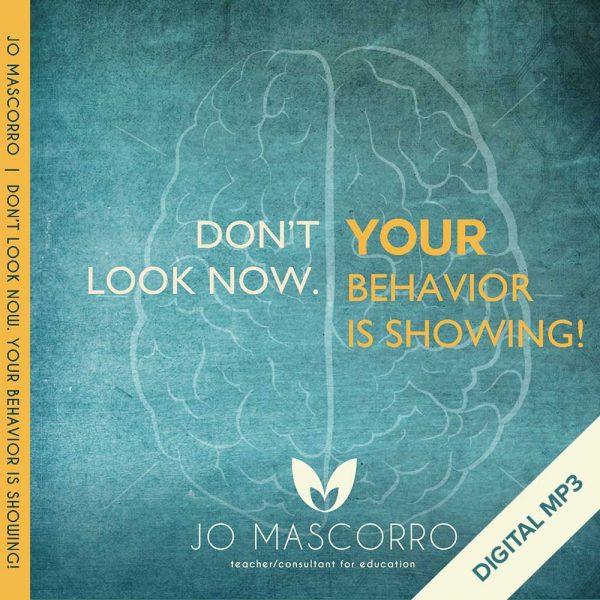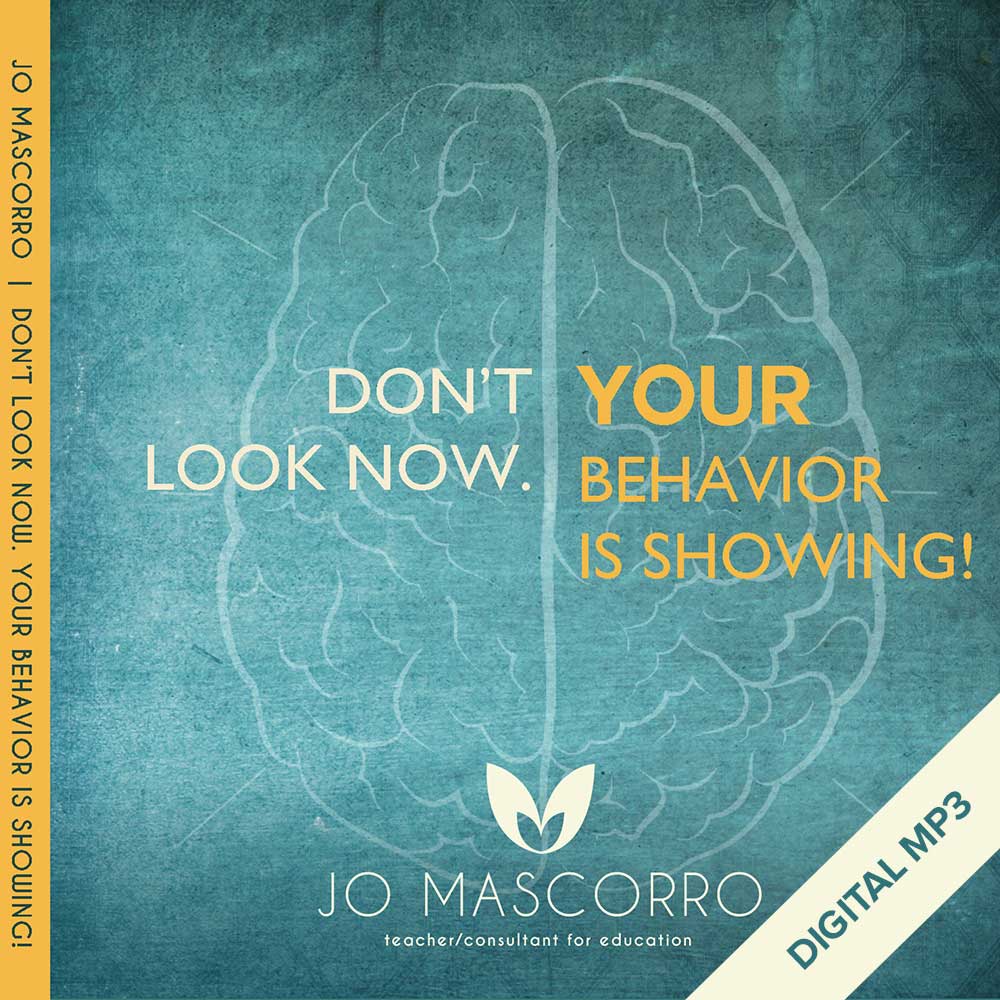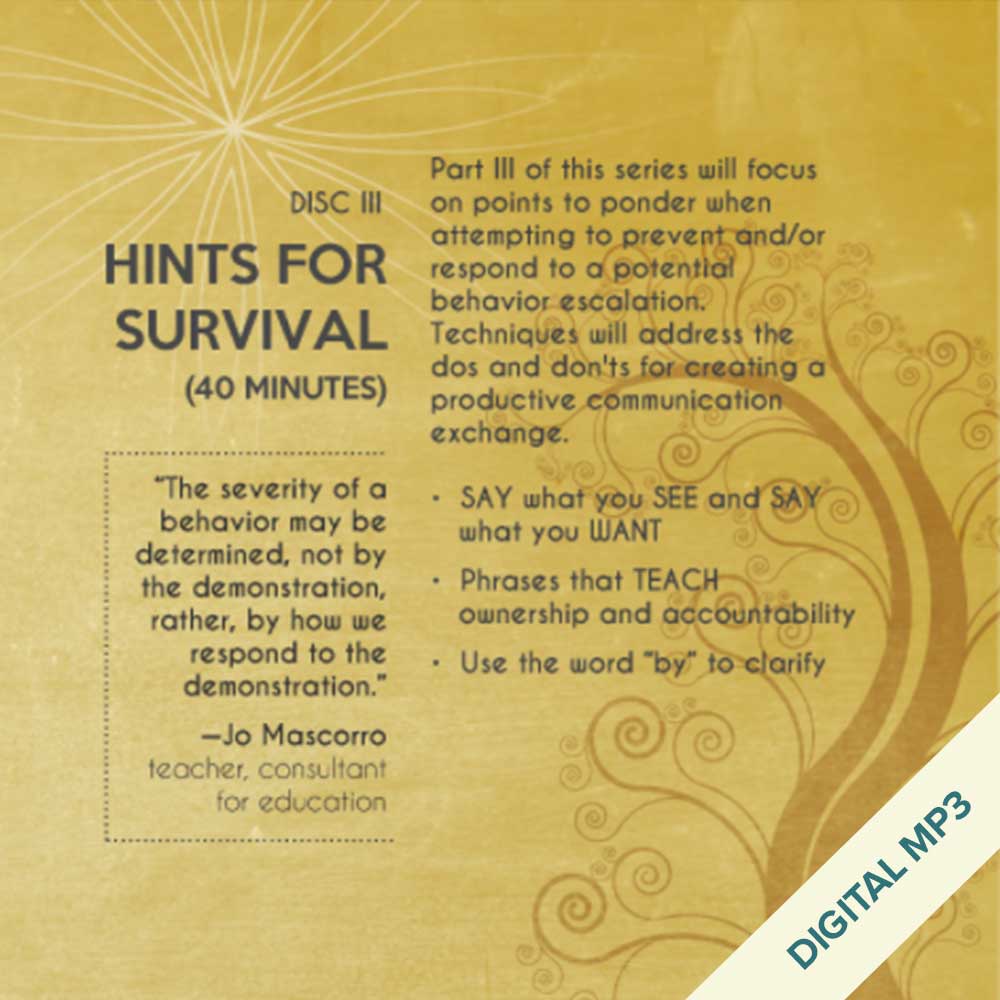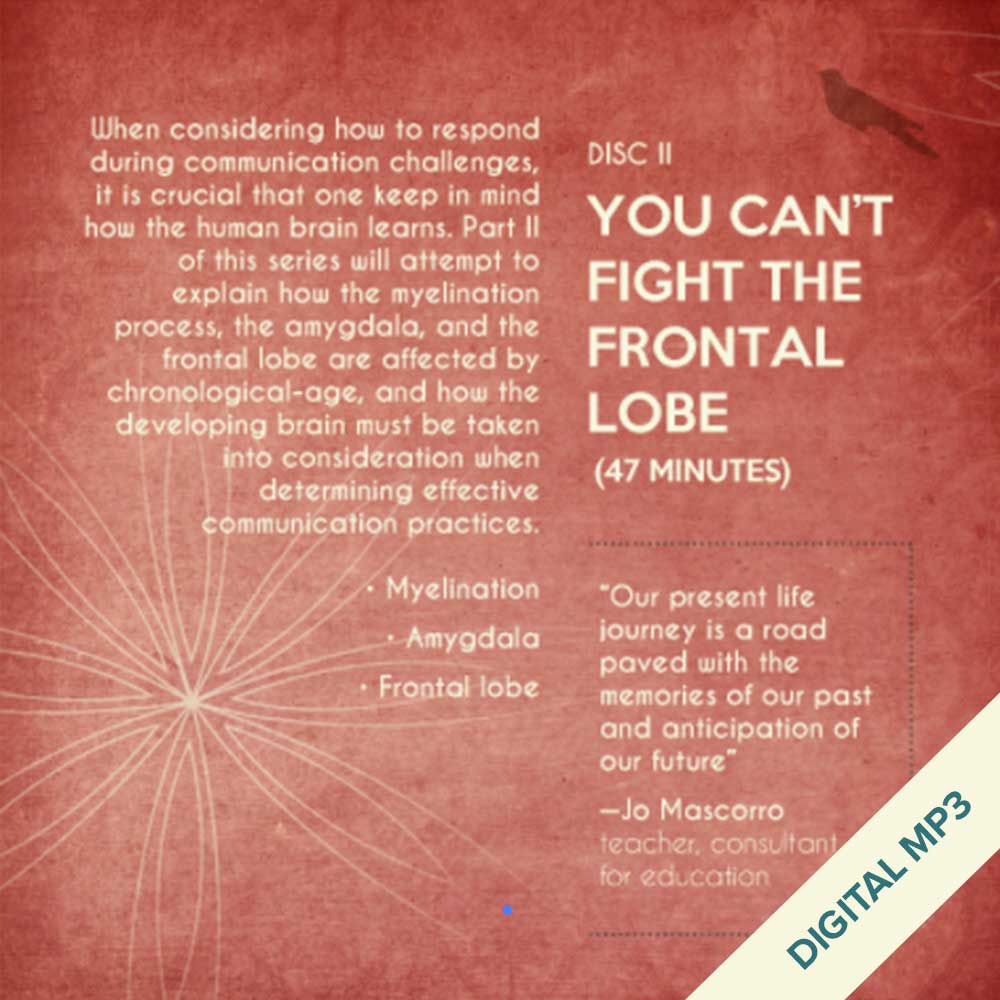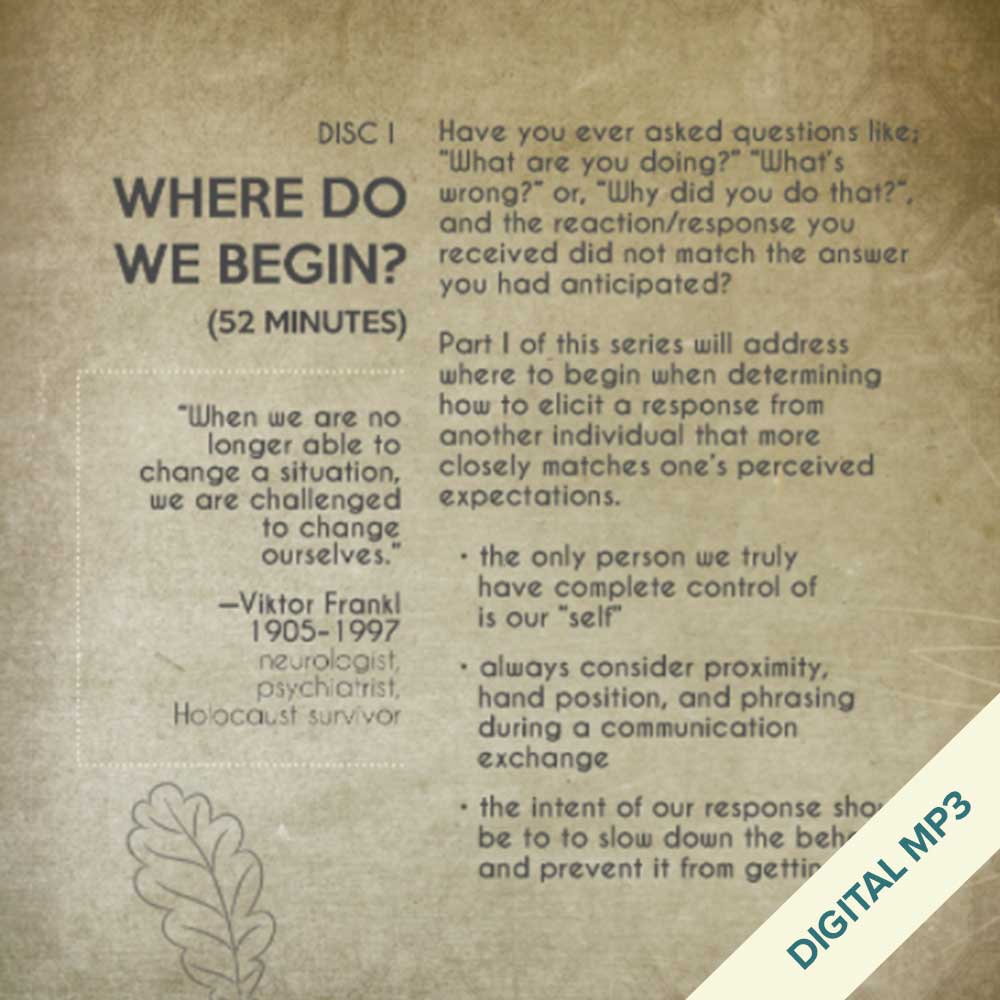Description
Three Part/Three Disc Digital MP3 featuring:
Disc 1: Where do we begin?
“When we are no longer able to change a situation, we are challenged to change ourselves.”
– Vicktor Frankl 1905-1997, neurologist, psychiatrist, Holocaust survivor
Have you ever asked questions like: “What are we doing? “What’s wrong?” or “Why did you do that”, and the reaction/response you received did not match the answer you had anticipated?
Part 1 of this series will address where we begin when determining how to elicit a response from another individual that more closely matches one’s perceived expectations.
- The only we truly have complete control of is our “self”
- Always consider proximity, hand position, and phrasing during a communication exchange
- The intent of our response should be to slow down the behavior and prevent it from getting worse
Disc 2: You can’t fight the frontal lobe
“Our present life journey is a road paved with memories of our past and anticipation of our future”
-Jo Mascorro, teacher, consultant for education
When considering how to respond during communication challenges, it is crucial that one keep in mind how the human brain learns. Part II of this series will attempt to explain how the myelination process, the amygdala, and the frontal lobe are affected by chronological-age, and how the developing brain must be taken into consideration when determining effective communication practices.
- myelination
- amygdala
- frontal lobe
Disc 3: Hints for Survival
“The severity of a behavior may be determined, not by the demonstration, rather, by how we respond to the demonstration”
-Jo Mascorro, teacher, consultant for education
Part 3 of this series will focus on points to ponder when attempting to prevent and/or respond to a potential behavior escalation. Techniques will address the dos and don’ts for creating a productive communication exchange.
- SAY what you SEE and SAY what you WANT
- Phrases that TEACH ownership and accountability
- Use the word “by” to clarify
 Where Do We Begin
Where Do We Begin 